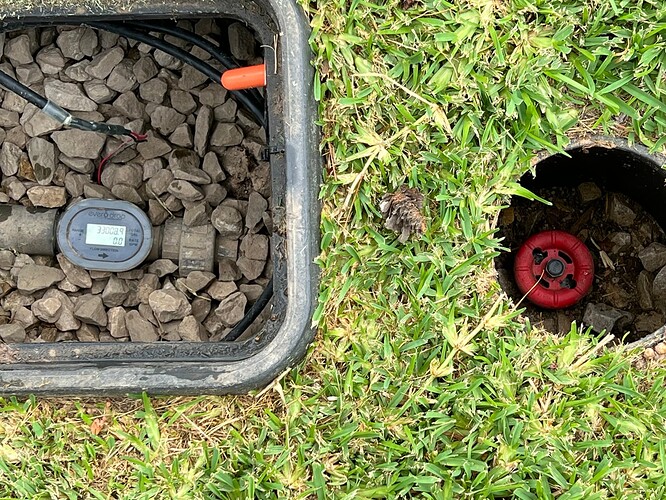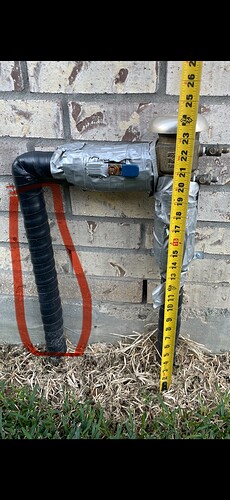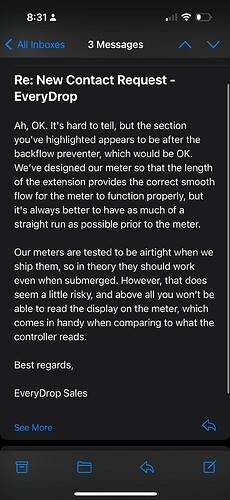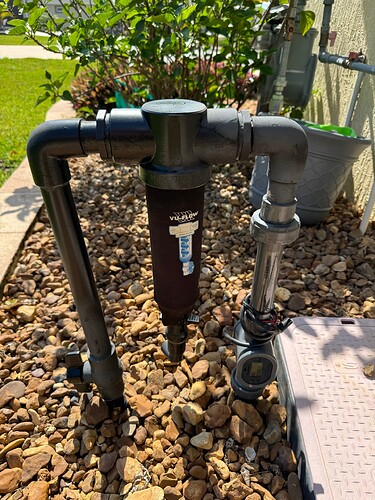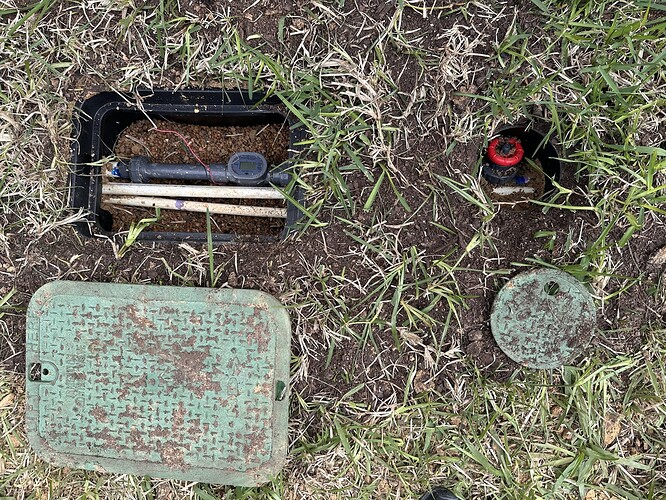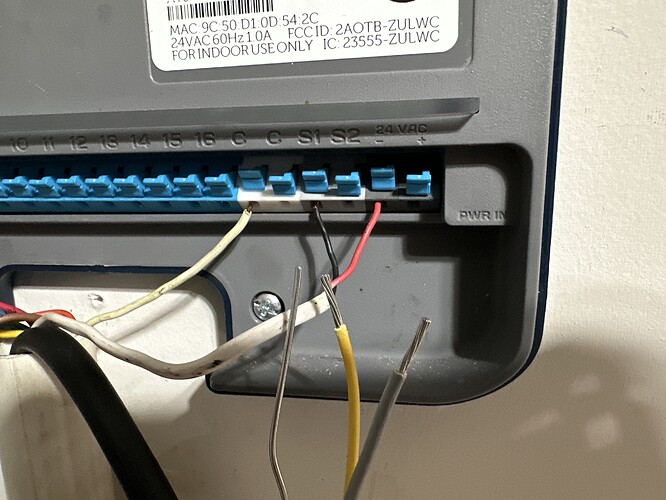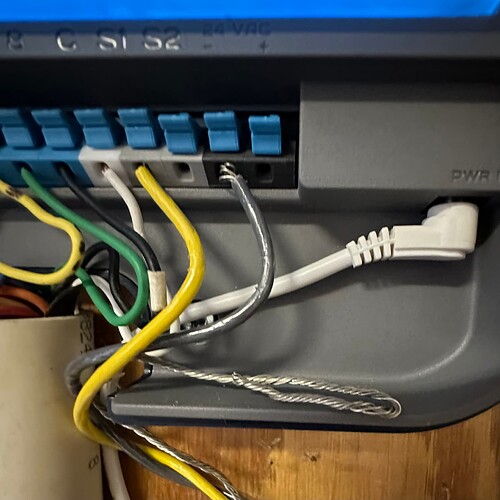Hello Rachio Community,
I’ve just ordered the Everydrop Meter Model 1004-EX to integrate with my Rachio 3 system and I’m curious about its impact on simplifying my irrigation setup. My system includes a drip irrigation for a vegetable garden as well as standard lawn irrigation.
My main question revolves around the practical benefits of having a flow sensor like the Everydrop:
- Ease of Setup and Precision Rate Adjustment: Will the Everydrop Meter, when paired with my Rachio 3, significantly simplify the process of setting up my irrigation, particularly in terms of determining the precise precipitation rate (PR)? Is it effective in taking the math and guesswork out of the equation for both drip and lawn irrigation systems?
- Monitoring and Efficiency: In your experience, how well does the flow sensor aid in monitoring and improving the efficiency of water use? Does it provide tangible benefits in terms of water conservation and cost-saving?
- Overall Impact on Irrigation Management: Essentially, is the addition of a flow meter to a Rachio 3 system a game-changer in managing both garden and lawn irrigation, and how so?
Any insights, experiences, or advice on this matter would be greatly appreciated, especially from those who have used a flow sensor with their Rachio system.
Thanks in advance for your valuable input!
I’ll take a crack at this. Any other users chime in.
Basically, with proper setup, yes. You’ll be able to pretty much gain a good control of water application as any home user can accomplish. You’ll gain leak detection, alerts about high or low flow to your valves, ridiculously easy calibration, immunity from pressure fluctuations in your neighborhood supply. I’m assuming you’re already using Flex Daily schedules for your regular watering. If not, try to get there.
Some things about the 1004-EX implementation to think about:
-
Drip zones - Below about 2 gpm (the 1004-EX is spec’d for 0.5-30 gpm at ±2 gpm accuracy), the flow meter’s measurement accuracy degrades at low flow. Small drip zones may have to be manually configured because Rachio’s leak detection range overlaps the 0.5-0.9 gpm range.
-
Downstream flow - The downstream pipe from the meter must provide enough back-pressure to stay full during operation. If it’s even with or below your valves, or oriented pointing upward, that’s not hard to achieve. If your valves are downhill from the meter (which may be located anywhere between your irrigation tap or backflow preventer and your valves), you may need to install a gate valve downstream which can be tweaked closed enough to add back pressure at the meter. Air (cavitation or otherwise) at the meter during operation results in distorted output, and you may have spurious (or no) signal usable to Rachio.
-
Temperature - note the operating temperature range for the 1004-EX, 32ºF - 140ºF. You can operate below freezing temperatures if the meter is buried, in a valve box, or insulated above ground. Even buried, if you disable your controller in cold season or empty or blow out your lines be sure the line where the meter sits can’t freeze.
-
Wired connection - With the proper signal cable, your meter can be quite a long way from your Rachio (about 1000 ft.). Regardless of the distance, get the right signal cable and install it properly. Don’t even think about using thermostat wire or CAT 5/6 conductors - one day, your meter won’t work and you won’t know why. Get “Toro signal cable” or equivalent - I can recommend Paige 180095TH 16 gauge 1 pair with shield and drain wire and bury it. SiteOne can get it for you.
That’s the highlights, and this community has enough users with meters to answer just about any question you might have. Good luck.
3 Likes
Thanks for the great advice John! Given that I live in Houston and my valve boxes often flood, do you think it’s better to mount the Everydrop Meter Model 1004-EX sensor in the ground or vertically after the backflow preventer?
Your call… There might be advantages for either. Mine is buried:
just downstream of my backflow preventer on a metered irrigation branch, with the 1" PVC gate valve just downstream of the meter, then downhill to the valve field. This placement is very near the street, and embedded in the lawn, so there’s no way to mount it vertically pointing upward like there might be if your backflow was near the house (perhaps unburied). An open-air situation, like perhaps in Houston, might be just fine for that. I’m 160 miles north of you in Tyler, and a couple serious freezes recently convinced me to install it below ground. If I ever have to change meters, I might have to dig it all up again.
The meter itself can tolerate getting wet. I’ve changed to high-end gel caps for the meter connection since this picture was taken.
Okay, thanks for the info! I purchased the cable and valve per your recommendation. I am nervous to place the flow meter in a valve box though. In Houston my valve boxes are frequently filled with water. I’m also nervous to mount it at the above ground vacuum breaker because of potential turbulence issues. Idk what to do tbh. I emailed Everydrop and they said it should be ok above ground, I guess I just want to get it right the first time. 
The highlighted area is the outflow to the valves, correct? If so the meter flow would be downward. It should be upward, so there doesn’t seem to be a way from your picture, unless you plumbed an upward loop somehow. The sensor in the meter must always be surrounded by water in operation.
If you do bury the meter horizontally, put it in a box anyway to protect it. It’s pretty tough, but it is plastic.
Mine is pointed down and works fine. Irrigation water here is recycled from holding ponds so it needs to be filtered thus the inline filter setup in the photo.
1 Like
I’m following you so far  I hate to ask, but what’d you do for wiring at the unit? Like where did you put the ground wire and what not?
I hate to ask, but what’d you do for wiring at the unit? Like where did you put the ground wire and what not?
At the flowmeter, I connected the yellow cable wire to red and the grey cable wire to black. Then inside the controller I put yellow to S1 and black to the -24v. Not sure what you have connected in those spots unless it is a rain sensor. I don’t have a rain sensor as I have a Davis Vantage Pro 2 personal weather station that my Rachio looks at for rain, etc. It is a lot more reliable than those rain sensors.
You can connect the flowmeter to S2 and -24v. Just be sure to tell the app that S2 is the Everydrop flowmeter. If your connection is a rain sensor, i would switch the red and black. You might have to make a splice of the grey and black to a single piece of wire to insert into the controller. Not sure if 2 wires will insert correctly or not.
1 Like
Yellow (meter red) to S1, Gray (meter black) to -24V. Drain wire available, but not connected (all shown in photo).
You can use S2 for the meter, and share the -24V tap if you must. If that red/black cable is a rain stop (on/off only), you might want to remove it altogether.
Various smart installation guys gave different opinions on the drain wire. It’s not connected (or exposed) at the meter end and disconnected at the controller. Someone smarter than I said I could connect it to a REAL earth ground if one was available, otherwise let it float. Nice install!
1 Like
Thank you both very much for your help! I’m burying the wire today, made a temporary connection last night and she’s counting the gallons. I’m shocked already to see my usage in one zone with rotors is using nearly 800 gallons per run.
Will log more data and report back.
Wow. How large of an area is it?
My largest zone is 2000 sq ft and it uses about 520 per watering.
Depends on your zone and heads, but to completely fill a 3500 sq. ft. warm season grass zone with 8 high capacity rotors, it used 2100 gallons in one session (with soaks) to fill the zone’s available capacity. Rachio is telling me it has “no upcoming watering” scheduled. That’s a lot, but Rachio uses less than half the water I used before it was installed. It was only the 2nd watering in April (as of the 18th).
Don’t overthink it. Unless you know that Rachio’s rate (which you’re now measuring) is 'way different than the rate your previous controller delivered (which we doubt), just leave it to do its “magic”.

